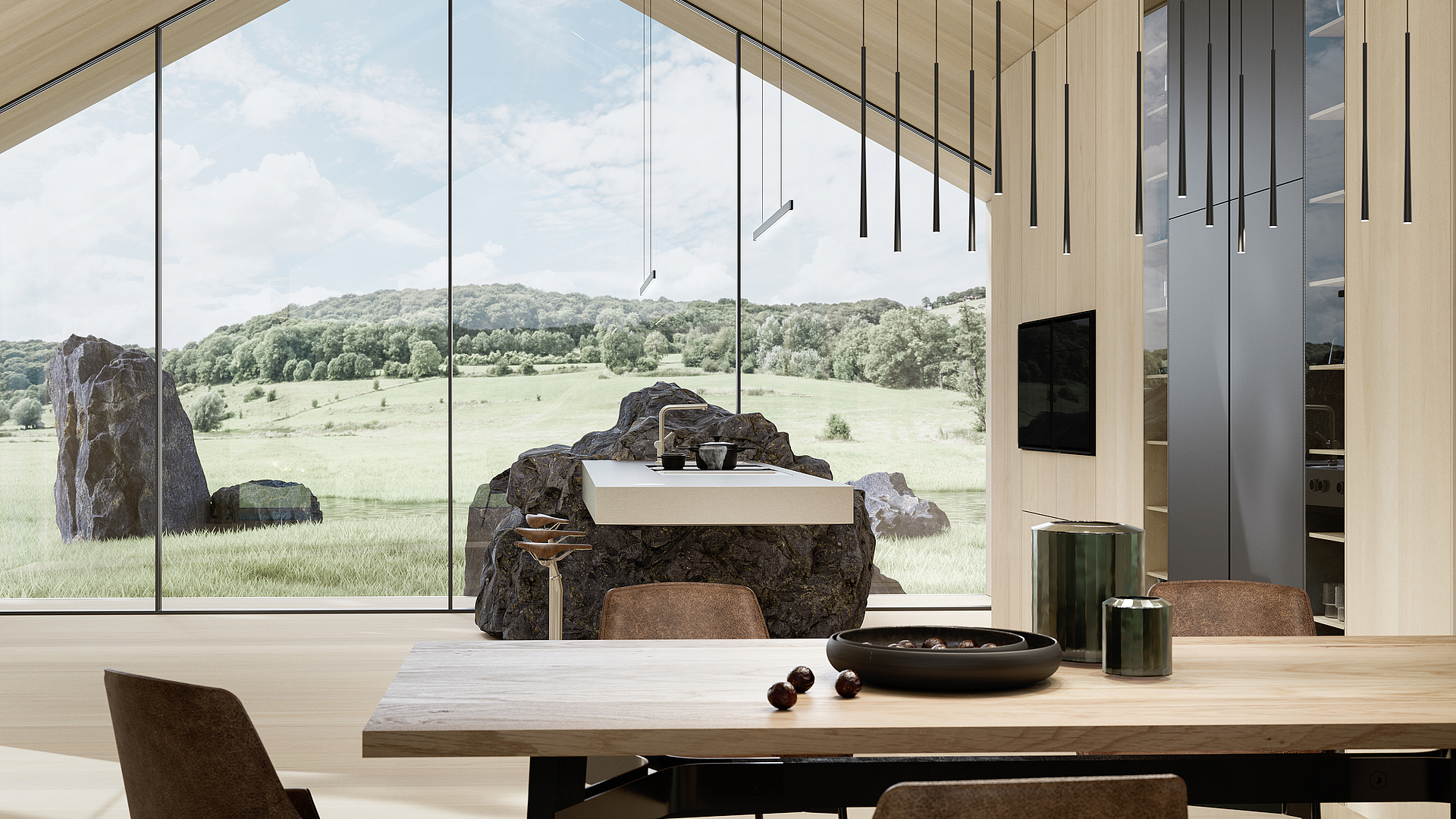
The light in the darkness: Lighting trends for autumn
Autumn is when the sun starts to rise later and the evenings get darker. And so, we retreat into our cosy homes for light and comfort. Lighting plays a key role in achieving this comfort. With these autumnal lighting trends, we’ll bring light where there’s darkness.
What types of lighting are popular this autumn?
Effective lighting is essential to a pleasant and cosy home, particularly in the darker seasons. The number of different types of lighting and ways in which you can combine them are practically endless. We’ll show you the most important types of lighting for creating a delightful autumn ambience.
Ceiling lights
Classic ceiling lights are probably the easiest way to illuminate a room. Being placed on the ceiling, they are efficient in terms of space and light up the entire room, providing a necessary base level of light.
That’s why ceiling lights are perfect for compensating for the increasing lack of natural light in autumn in that they flood the room with as much interior light as possible.
Pendant lights
Pendant lights generally consist of one or more light fixtures which hang from the ceiling on a cable or cord. Unlike ceiling lights, the significant aspects of pendant lights are their decorative function and contribution to the ambience of the room.
This makes the BORA Horizon linear pendant lights and the vertical BORA Stars pendant lights ideal for bringing more structure and life into interior spaces, particularly kitchen, dining and living areas, and creating atmospheric lighting.
Spotlights
Spotlights serve to direct emitted light onto certain areas. Through lighting accents, they can draw special attention to and highlight individual elements or sections of a room.
Depending on the angle their beams are directed in, spotlights can be used either for targeted and directed lighting or, using a wider beam angle, for directly lighting an entire surface.
Standing lights
Standing lights usually consist of a light source, a lampshade and a base. Unlike other types of lighting, standing lights aren’t bound to one location and are highly versatile.
Most of them only provide light to a single part of the room and, in doing so, create cosy pockets of light in living and lounge areas. Thanks to the special, pleasant ambience standing lights create, they’re great for achieving just the right mood for spending an autumnal evening reading while curled up on the sofa.
Types of lighting and colour temperature – basic terms in lighting planning
If you’ve ever dived into the topics of lighting and lighting planning, sooner or later you will have run into the terms colour temperature and direct and indirect lighting (and the difference between the two). These things are fundamental to interior lighting, so read on to find out what they’re all about.
Direct lighting vs. indirect lighting
Direct lighting refers to lights that are used to emit uninterrupted light directly into a room or onto a floor space. This kind of lighting is especially important for rooms where we do work or chores.
Indirect lighting is light which isn’t emitted straight onto certain objects or areas, but is instead initially reflected off of a wall or an alternative room element. This reflection causes the light to be emitted in a diffuse manner, which creates lighting that’s pleasant to the eye and doesn’t produce any glare.
As is so often the case in life, it’s the right mix that creates pleasant lighting and cosy atmosphere. Complementing direct light sources with indirect lighting elements such as LED strips or illuminated sideboards is a sure way to achieve that special comfort factor, without robbing the rooms of their functionality.
Colour temperature – warm or cold?
Colour temperature, also called light colour, is a decisive element when it comes to achieving your desired room ambience. To start with, there are warm whites (2700–3000 Kelvin) and neutral to cold whites (3300–5300 Kelvin).
As the colour temperature of the lighting is highly influential on how a room is individually perceived, it’s important to choose a light colour that’s suitable for the functionality of this room. Warm white light is recommended for living areas like the lounge or bedroom and for the dining room, since creating a cosy atmosphere is particularly important in these places.
Wherever concentrated activities like work, writing, cooking and personal hygiene are carried out, it makes sense to employ more neutral to cold white lighting. This includes the bathroom, the kitchen and offices.
Autumnal illumination with the BORA Horizon and BORA Stars pendant lights
Having a practical yet homely and emotionally appealing atmosphere within our own four walls is what keeps us feeling warm and cosy throughout the dark and chilly autumn. The BORA Horizon pendant lights and BORA Stars pendant lights make for the perfect companions through the darker seasons.
For bright, practical lighting in the kitchen as well as relaxed mood lighting during a family dinner, BORA Horizon offers suitable lighting for every situation thanks to its stepless dimmer and five-level light temperature adjuster. These gesture-controlled linear pendant lights are therefore suitable for providing indirect ambient lighting over your dining table or in the lounge or a direct light source over your cooktop.
With the BORA Stars, you can plan the room lighting according to your exact requirements, as this vertical pendant light is available as an individual light in surface-mounted and built-in versions or as a set of three lights in a linear or circular arrangement. Combined with a rotating or light switch, this variant also features stepless dimming, thus offering maximum customisability and sophisticated lighting accents with which to brave the dark autumns.